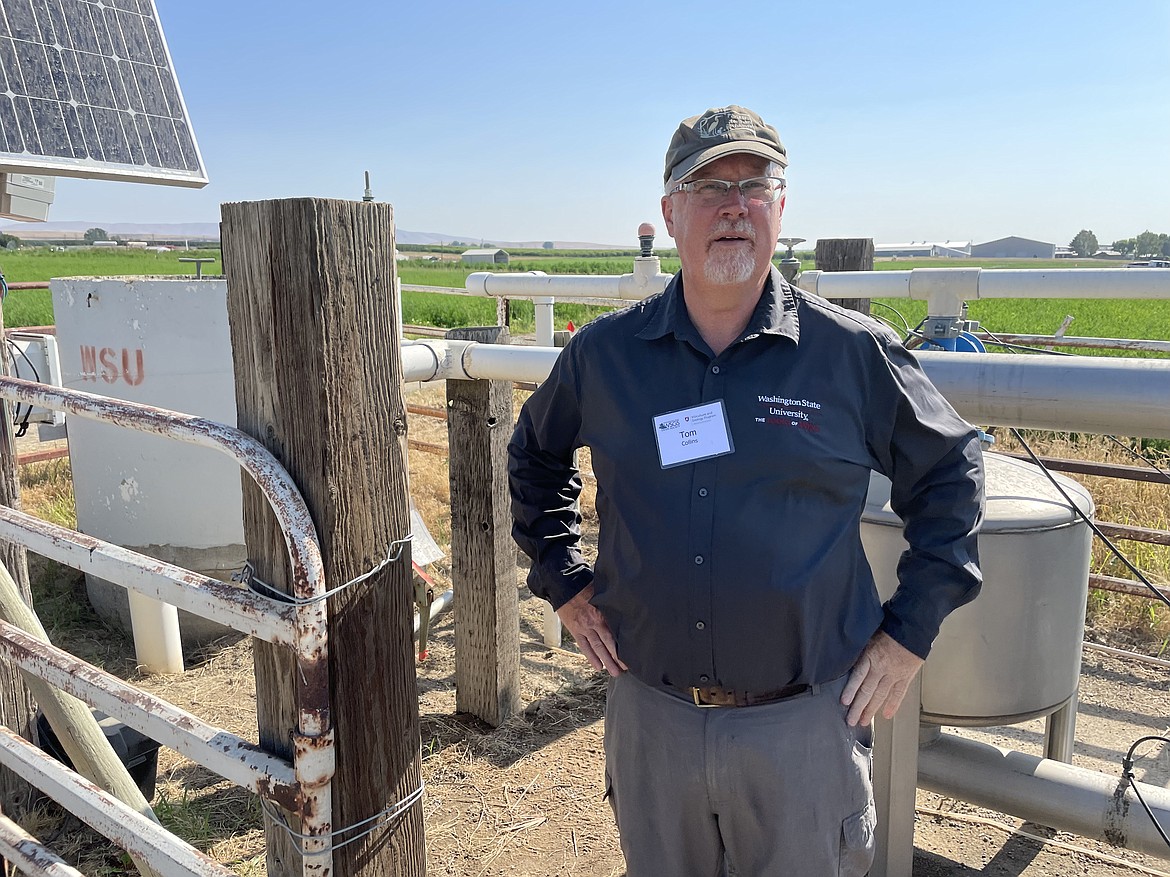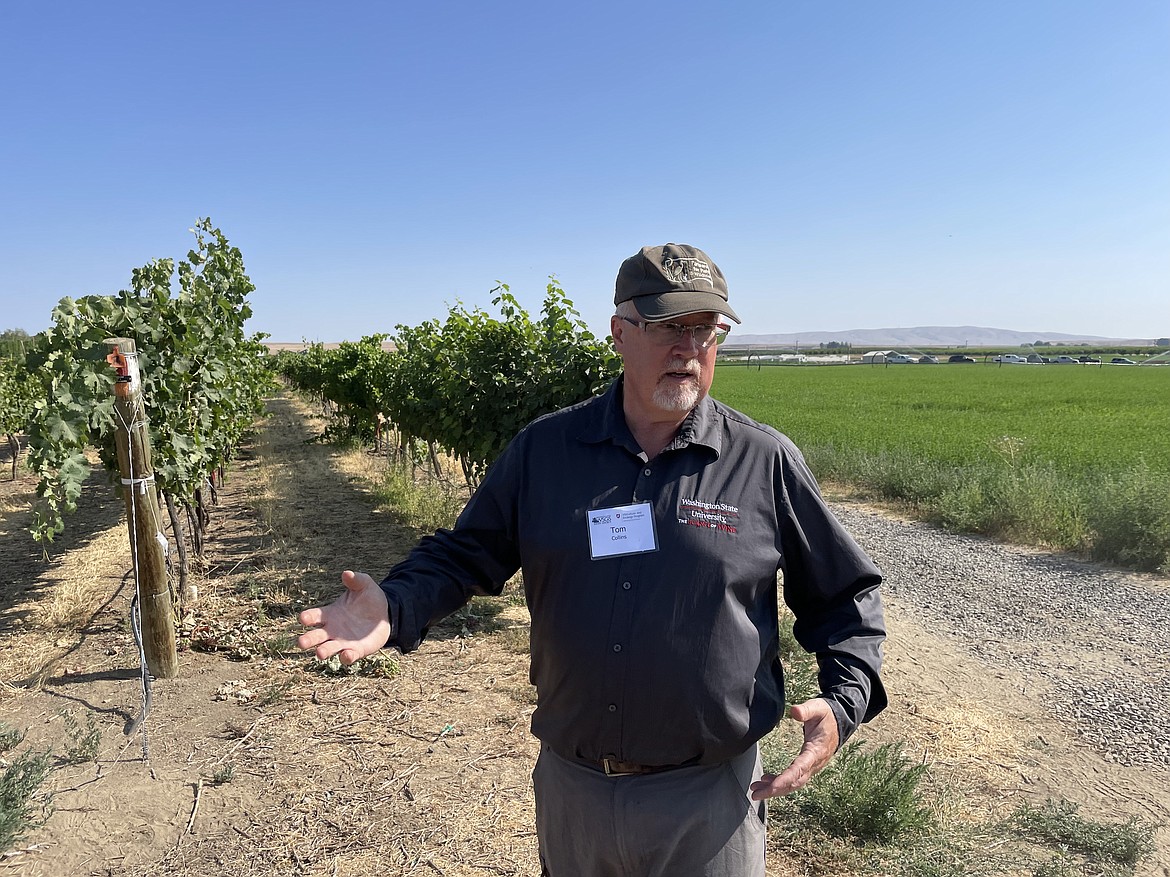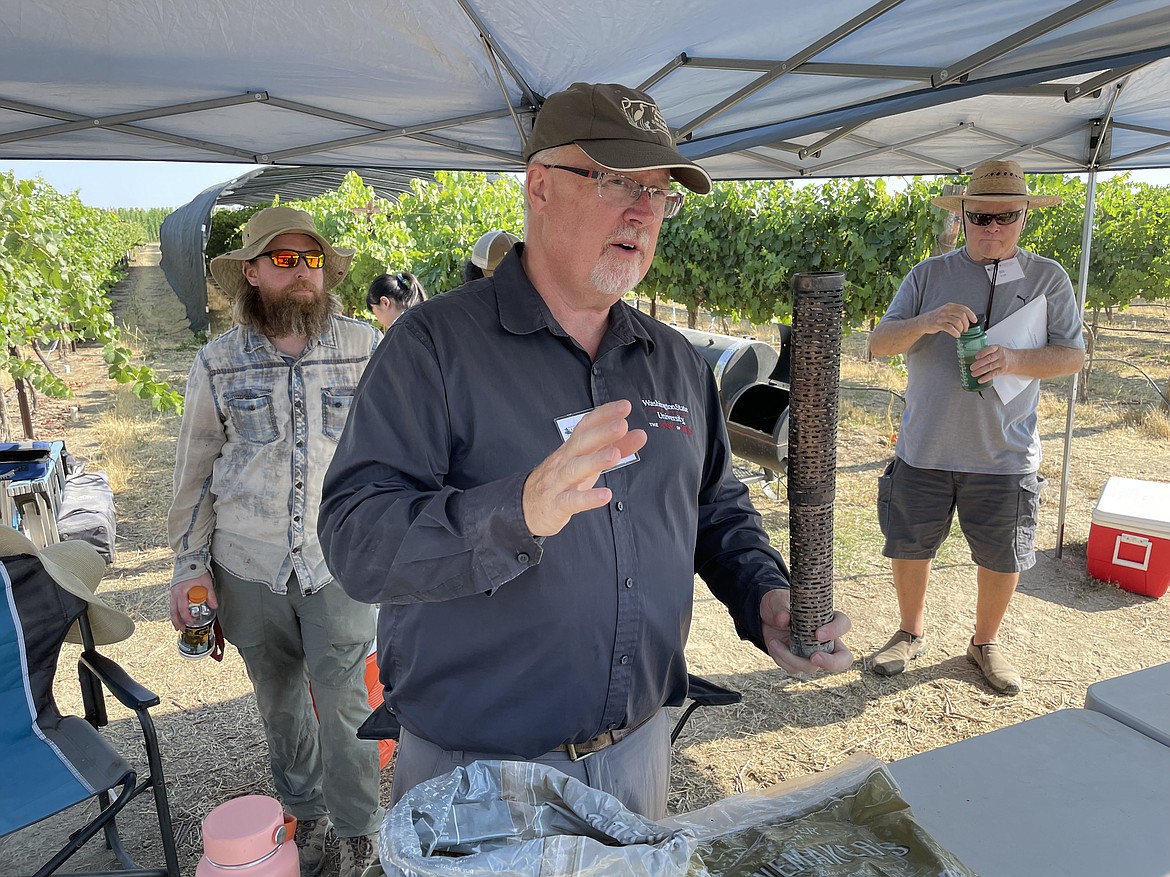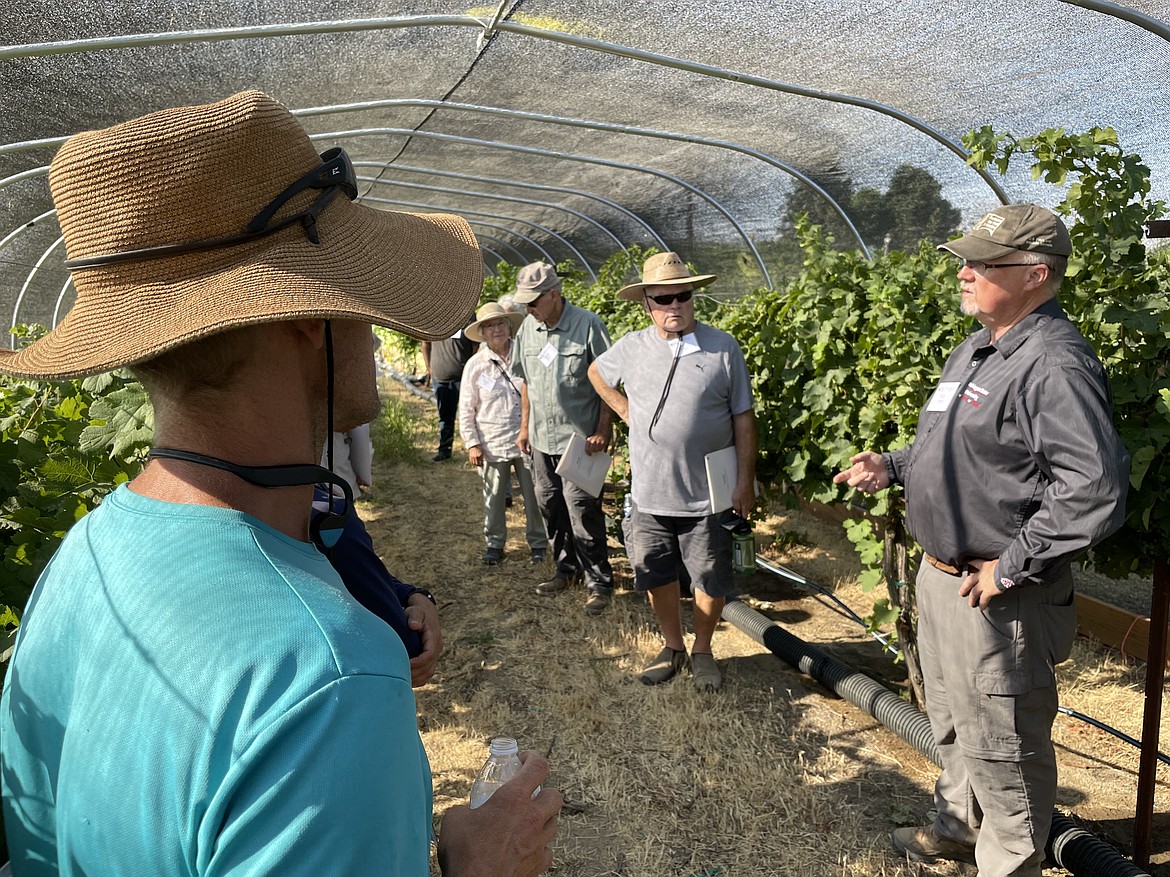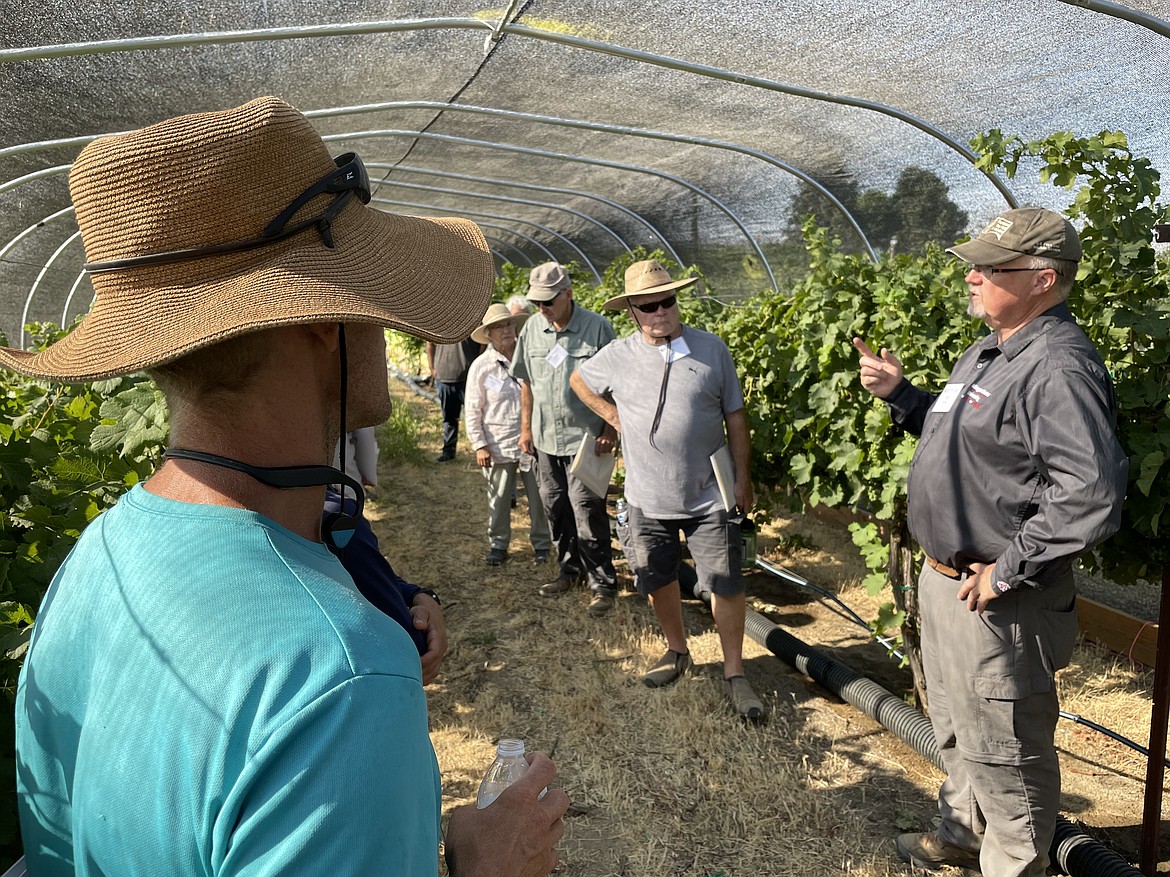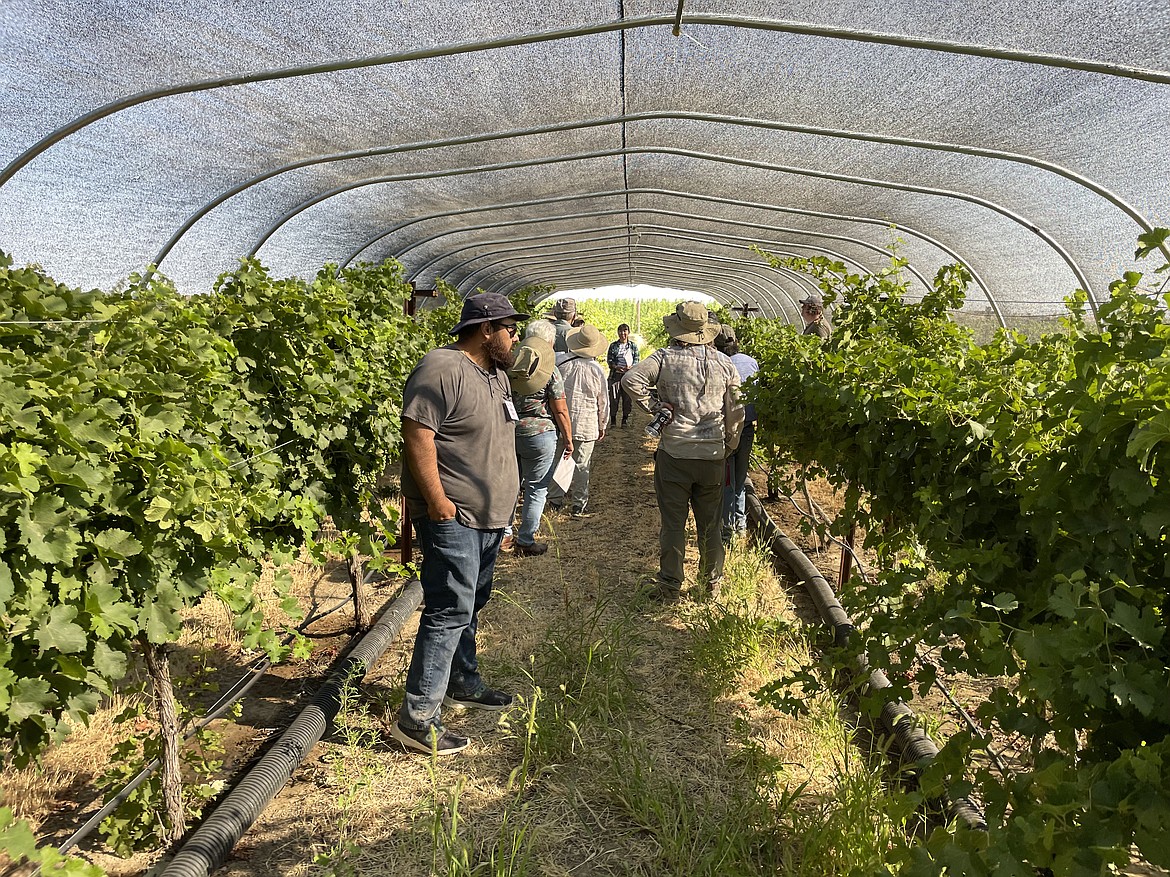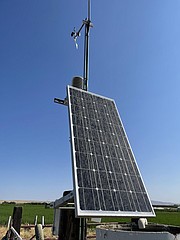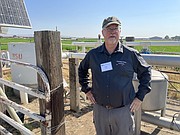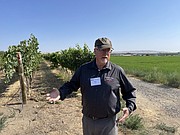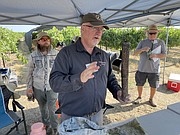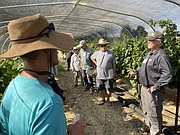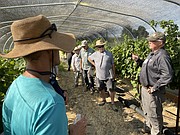Researchers smoke grapes to see how it affects wine
PROSSER — Smoke is one of those things you don’t want to taste in a wine.
Which is why Tom Collins, an assistant professor at Washington State University’s Wine Science Center, is busy setting fire to wood chips and wood pellets and covering a small section of the university’s research vineyard here with smoke.
Underneath a hot Yakima Valley sun in late July at WSU’s Irrigated Agriculture Research and Extension Center Roza Farm, amidst the grapes, the hops, the hemp and the alfalfa, he stands in front of a smoker, out of which extends a long, black flexible tube — like a dryer vent hose, only scores of feet longer and strung through several rows of grape vines.
Collins is surrounded by graduate students and researchers, talking to an assorted group of wine growers, hobbyists and others who have come to WSU’s research vineyard as part of the 2021 Viticulture Field Day, and he holds up a bag of Traeger wood pellets.
Winemaker’s blend, he notes ironically. WSU’s wine research program bought the last pallet of the now-discontinued blend of oak, apple, hickory and alder, and has been using the pellets, as well as local plants, for the last several years to test the effects of smoke on grapes and grapevines.
“You fill up the tube with pellets,” Collins said as he holds up a short metal tube designed to contain smoldering wood pellets, “and once it’s lit, it will burn for five hours and make smoke.”
With all the fires in the West blanketing large portions of Washington state, especially its eastern and central wine producing regions, with smoke for portions of the summer, Collins wants to know what that means for grapes and how growers can best adjust to it.
Currently, Collins and his team of researchers are testing merlot, but intend to smoke some cabernet later in the season.
“We will do exposure when the fruit is ripe,” he said. “We’ll pick some of that fruit and make wine while it’s still smoking, and then wait for others, and see what the outcome is. Is the wine picked during exposure better, or is the wine later turn out to be better?”
“And we’ll have some data to go with it to help us understand why it turns out the way it does,” he said.
To measure all of this, Collins and his team of researchers have covered a patch of this vineyard with a shade to contain the smoke and have placed a number of sensors amidst the grapevines to measure the particles in the air, and then a number of tests — including examining which genes are turned on and off by smoke exposure — to measure the sugar content of grapes at various times during the season.
Collins said the tiniest particles they measure for are 1 micron — 1 millionth of a meter — in diameter, the kinds of particles that wildfire smoke is full of. The particles also mix easily with water vapor, making it behave more like a misty liquid sometimes than a collection of very tiny solids.
“To a certain extent, when you have a smoke exposure, it’s almost like a pesticide application rather than particles,” he said.
Collins said the greatest effect wildfire smoke has on wine is on the skin of the grapes themselves, rather than anything that happens on the leaves and is eventually transported to the grapes.
“That’s why it’s more of an issue for red wine because we are fermenting with the skin,” he said. “With whites, you get the juice away from the skin, and that reduces the amount of extraction.”
Collins said one of the things grapes do in response to smoke exposure is create certain kinds of sugar compounds called glycosides. Molecules from wildfire smoke that find their way to a grape skin will get attached to some of these glycosides, some of which are stable in acid and some are not, Collins said.
Because wine is an acid, the breakdown of some glycosides will release volatiles pulled in from the smoke, resulting in that smoky taste no one wants, Collins explained.
“So that’s what we want to try and understand. What is the vine doing when it puts the sugars on? Does it do it all at once or does it do it over time? More of the less-stable glycosides or more of the more-stable glycosides?” he said.
Collins said his team will pick some grapes during a smoke exposure — which typically lasts 36 hours in the WSU research vineyard — and some after to determine if the timing of harvest makes any difference to the kind of compounds and the amount the grape produces when exposed to smoke.
“One answer is we want to get the fruit off the vine before it has any additional exposure, right? Or do we want to wait until after the smoke has cleared and then pick?” he said. “And so what we want to understand is what is the vine doing, and are there things that it’s doing that if we pick during the exposure that actually make it worse than if we wait.”
In addition, Collins said WSU is going to install 14 solar-powered air sensor stations across Washington’s wine growing region to measure temperature, relative humidity, wind speed and direction, particulate matter and levels of pollutants like ozone, nitrous oxides and sulfur dioxides.
Because wildfire smoke isn’t all the same, either. It comes from different sources, from forests and scrubland, with larger particles dropping out over time and sunlight changing the chemical composition of smoke.
“The distance the smoke travels has an impact because as the smoke travels, it changes, and there are atmospheric reactions that happen during daylight hours that are different from the reactions that happen at night,” he said.
The smoke from last year’s fires in California and Oregon was different, and had a different effect on grapevines in the test vineyard, than the smoke from local fires, Collins said. The sensor network will span from Chelan south to the Canoe Ridge Vineyard near Whitcomb, along the Columbia River, and from Zillah east to Walla Walla, and is funded by the Washington State Wine Commission, Collins said, though Collins said expansion has been slowed because sensor makers are having a difficult time getting computer chips for their equipment.
“By having those sensors, we may be able to give an estimation of how the smoke has traveled and how it’s aged, and we’ll compare results with different ratios of those gasses to the results we’re seeing in those vineyards,” he said. “If there’s an actual event, we’ll have the data about it, we’ll make wine from fruit from those vineyards, as well.”
“All of those things play a role in whether a smoke event is going to play an issue or not,” he said. “Timing, how long it traveled, fuel source, so understanding how any particular event is going to affect a vineyard, we’re still just scratching the surface.
Charles H. Featherstone can be reached at cfeatherstone@columbiabasinherald.com.




